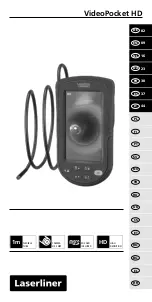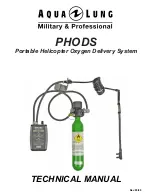4 - 9
Transpector MPS Operating Manual
The material factor,
M
ab
, depends on the fragmentation pattern for the particular
substance, the fragmentation pattern for a reference gas (usually nitrogen), and the
ease with which the substance can be ionized relative to the same reference gas.
The relationship involved is shown in
:
[3]
The term
FF
ab
is the fragmentation factor for substance
a
at mass
b
. It is equal to
the fraction of the total current of all ions from substance
a
which have a mass
b
.
Finally,
XF
a
is the ionization probability of substance
a
, relative to nitrogen (i.e.,
XF
N
=1
). That is, it is the ratio of total ion current (for all masses) from substance
a
to
the total ion current from nitrogen, both measured at the same true partial pressure.
Both fragmentation factors and ionization probabilities depend strongly on the
energy of the ionizing electrons. If the correct values of these factors are not known
for the exact conditions of the particular analyzer being used, they can be
approximated using published values for other conditions with, generally, only a
small loss in accuracy.
Fragmentation factors can be calculated from fragmentation patterns given in the
general references cited in
. Other valuable references include the Index
of Mass Spectral Data from ASTM, EPA/NIH Mass Spectral Data Base by Heller
and Milne, and an extensive library of spectra available from the National Institute
of Standards and Technology (formerly the National Bureau of Standards).
lists the fragmentation factors (
FF
) for the major peaks for selected
substances.
NOTE:
Actual fragmentation factors vary significantly depending especially on the
ionizer, electron energy, and mass filter turning. For best accuracy,
measure fragmentation factors with the same instrument used for the
analysis, under the same tuning conditions
M
ab
1
FF
ab
XF
a
-----------------------------
=


















